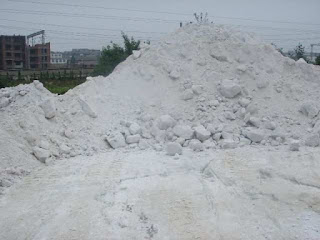GOALS AND BASICS OF MINERAL PROCESSING
In the
traditional sense, mineral processing is regarded as the processing of ores or
other materials to yield
concentrated products. Most of the processes involve physical concentration
procedures during which the
chemical nature of the mineral(s) in question does not change. In
hydrometallurgical processing, however, chemical reactions invariably occur;
these systems are operated at ambient or elevated temperatures depending on the
kinetics of the processes.
The lead zinc ore processing in the production of metals is to yield metals in their purest
form. Mineral processing plays an integral part in achieving this objective.
Figure 1 shows a generalized flow diagram for metals extraction from mining
(step 1) through chemical processing.
Steps 2
and 3 involve physical processing and steps 5 and 7 involve low-temperature
chemical processing (hydrometallurgy).
All four
steps are considered part of mineral processing. High-temperature smelting and
refining (pyrometallurgy), steps 4 and 6, are not included under the heading of
mineral processing.
Table 1
specifies processing routes from ore to pure metal for a number of metals. Note
that processing routes can be quite different and that more than one route may
be possible for many of these metals. For example, in the extraction of copper
or gold from low-grade ores, dump or
heap leaching is commonly practiced. The choice of this leaching practice is
frequently driven by the overall economics of the operation. Because crushing
and grinding of ores are quite expensive, leaching of ores in large sizes is
attractive compared to the leaching of finely ground ores, even though the
overall recovery of metals from the leaching of fine particles is, in general,
much greater than that obtained with large particles. The introduction of this
innovative leaching process has made feasible the mining of many mineral
deposits that could not be processed economically through conventional
technologies.



评论
发表评论